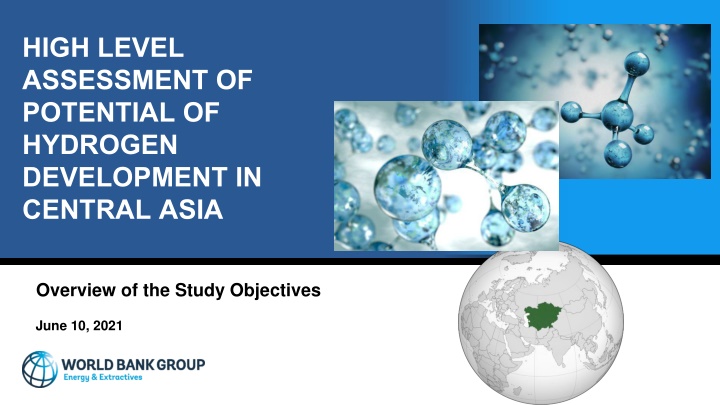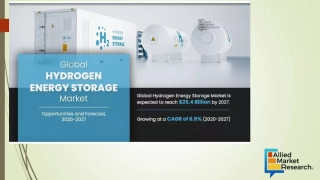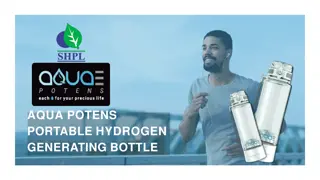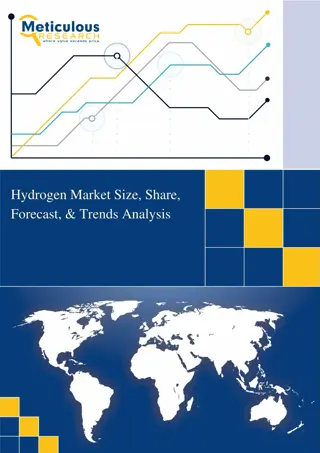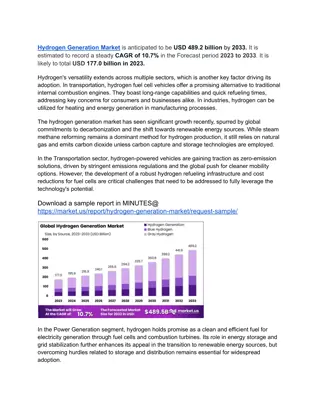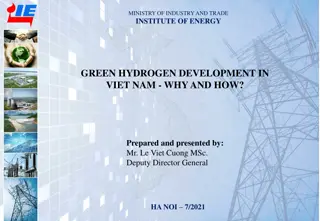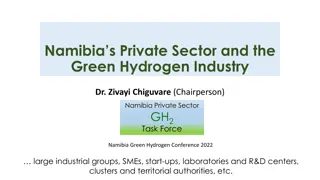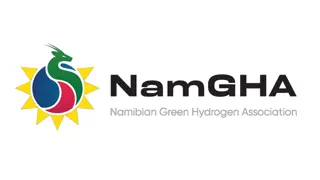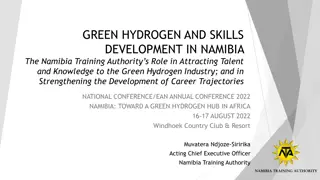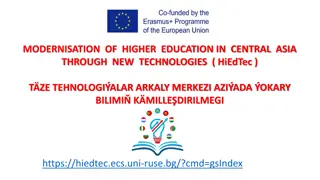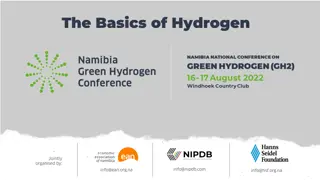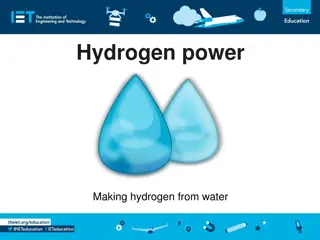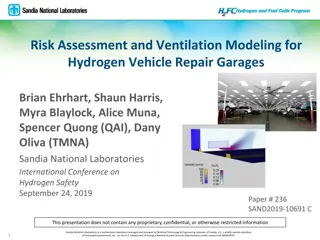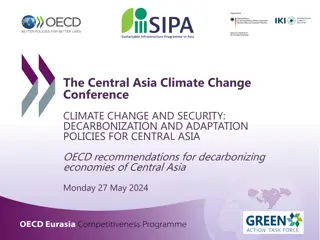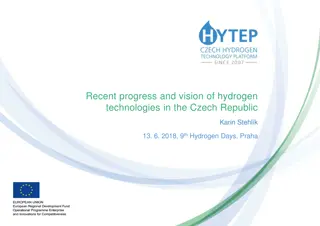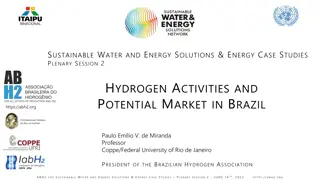High-Level Assessment of Hydrogen Development Potential in Central Asia
This study provides an overview of the potential development of hydrogen in Central Asia, highlighting the opportunities arising from a global shift towards climate neutrality. It delves into the Hydrogen Value Chain, renewable energy potentials, and the economic analysis of producing green hydrogen and downstream products in the region. The study also includes estimates of production for various hydrogen-related products and analyzes the domestic use and trade perspective of hydrogen in Central Asia.
Download Presentation

Please find below an Image/Link to download the presentation.
The content on the website is provided AS IS for your information and personal use only. It may not be sold, licensed, or shared on other websites without obtaining consent from the author.If you encounter any issues during the download, it is possible that the publisher has removed the file from their server.
You are allowed to download the files provided on this website for personal or commercial use, subject to the condition that they are used lawfully. All files are the property of their respective owners.
The content on the website is provided AS IS for your information and personal use only. It may not be sold, licensed, or shared on other websites without obtaining consent from the author.
E N D
Presentation Transcript
HIGH LEVEL ASSESSMENT OF POTENTIAL OF HYDROGEN DEVELOPMENT IN CENTRAL ASIA Overview of the Study Objectives June 10, 2021
Introduction What drives the world-wide hydrogen economy? Main levers to reach climate neutrality Hydrogen is one of the main six components of the energy transition strategy 1. Energy Efficiency & Conservation 2. Renewables 3. Electrification end-use sectors 4. (Sustainable) BECCS 5. Hydrogen & Derivatives 6. CCS / CCU Source: IRENA (2021), World Energy Transition Outlook 2
Why looking to the hydrogen economy in Central Asia? Opportunities from a worldwide move to climate neutrality A global transition to carbon neutrality induces risks in the region notably for countries with dependence on oil and gas exports Renewable energy sources and (Green) H2 production go hand in hand and can provide opportunities for the energy and industrial sector Large potentials for renewable energy sources in the region (solar PV, solar CSP, wind energy and hydro power) Renewable energy markets to reach 2.15 trillion USD by 2025 Links to China, Russia and potentially to Europe via existing or planned natural gas pipelines Prospects for strengthening cooperation in the region on infrastructures (extending electricity interlinkages; upgrading gas infrastructures to the use and transport of H2) Fit of downstream production of hydrogen-related products (ammonia, methanol, synthetic fuels, synthetic petrochemicals...) to present industrial policies to diversify industrial production and to put an accent of higher value products. Source: Statista for size of renewable markets by 2025 (https://www.statista.com/statistics/639788/renewable-energy-market-size-worldwide-projection/) 3
The Hydrogen Value Chain Hydrogen value chain Power generation (renewables, natural gas) H2 Production H2 Storage, transportation and methanization H2 Purification and drying H2 Use Picture source: https://www.bilfinger.com/en/press/customer-magazine-bilfinger-now/articles/2020/03/the-hydrogen-value-chain/ 4
Study Design High level assessment of potential development of hydrogen in Central Asia Objectives Characterization of the renewable energy (RES) potentials by country Techno-economic analysis for the cost of (Green) hydrogen and down-stream products in the region Time horizon: Today (based on present RES cost), 2030/2050 (based on expected world-wide development of RES cost and electrolyser cost) Estimates of Production Hydrogen and Downstream Products Hydrogen Synthetic Ammonia Synthetic Methanol (includes also cost for carbon recycling (Direct Air Capture DAC) Synthetic Methane (includes also cost for carbon recycling (Direct Air Capture DAC) Green Steel (based on direct reduced iron + H2) High-level analysis of domestic use of hydrogen in Central Asia (production sectors with potential H2 demand, supply relevance) (based on national production statistics) High-level analysis of trade perspective (strength in exports with potential relevance for H2 demand, supply) (based on UN Comtrade import/export statistics) 5
Next Steps Consultation with government counterparts on results of the assessment Dissemination of results in the next CAREC ESCC Meeting Support knowledge sharing on hydrogen development 6
